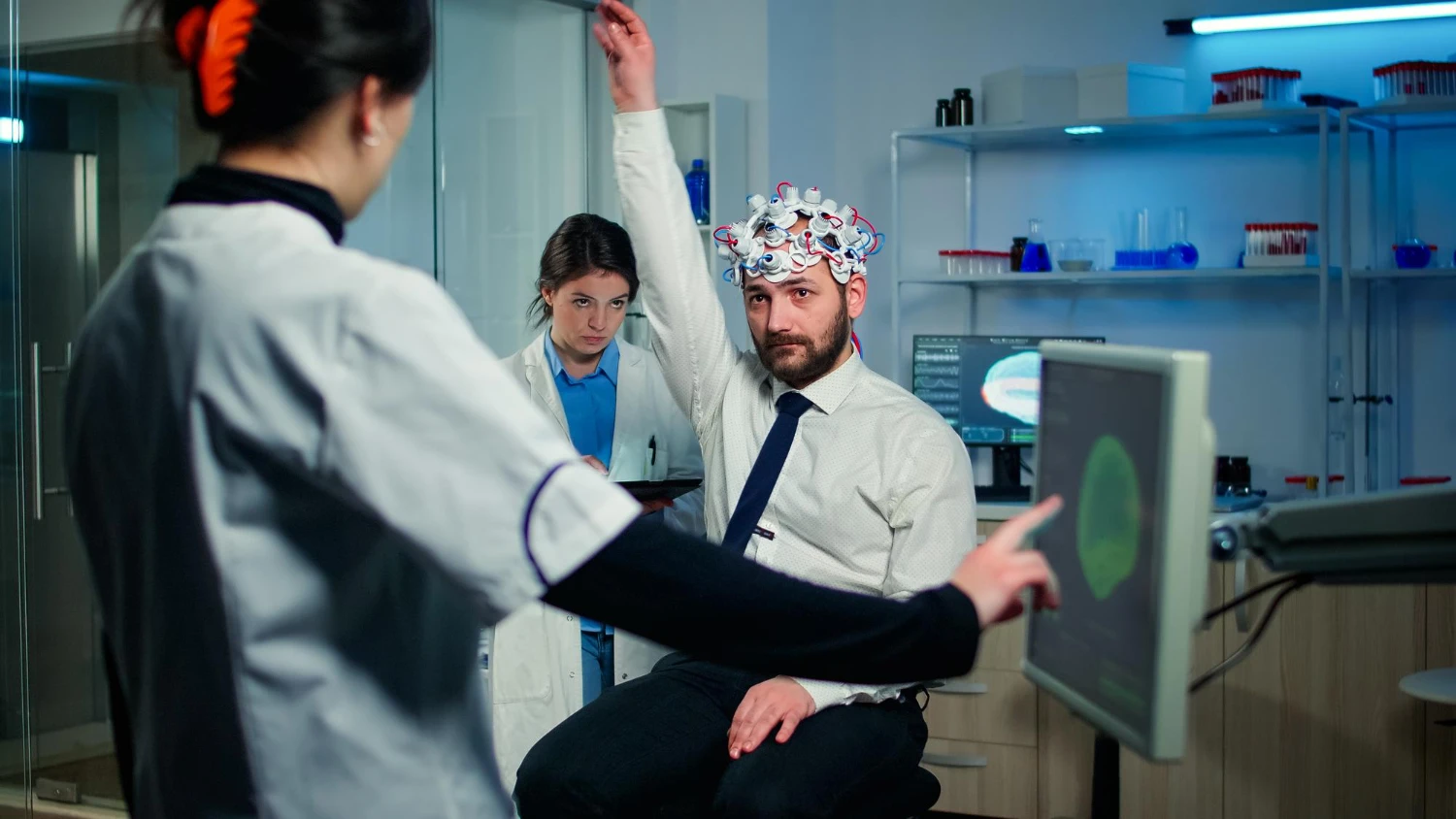How to Improve Balance After Brain Injury
The process of rehabilitation after a brain injury is a difficult and unique path that a person has to undergo. It is not easy; it takes a lot of courage, strength, and the backing of one’s family and friends.
A rather frequent consequence of a brain injury is the disturbance of balance, which can interfere with the patient’s daily routine.
However, the negative conditions can be managed, and balance can be restored to enhance the quality of life. In this article, we will learn about how to improve your balance after a traumatic brain injury.
Remember that treating brain injuries can be highly costly. That’s why you should always have a reputable brain injury lawyer by your side to get maximum compensation.
How Can Brain Injury Impact Your Balance?
The brain can be damaged by a variety of causes, including trauma (accidents or falls), stroke, or disease.
Such injuries interfere with the normal functioning of the brain and its capacity to handle information and coordinate movements and balance.
The cerebellum part of the brain, which is usually involved in the coordination of movement and balance, is usually affected.
Brain injury patients may be disoriented, have balance problems, experience vertigo, and even have problems with motor coordination.
Some of these symptoms can be so irritating and disappointing, but it is very encouraging to know that there is always a reason behind it.
Where does Rehabilitation Fit in the Quest to Achieve Balance?
Rehabilitation is an important part of the healing process and is an essential component of treatment. It is a process that enlists the services of a physical therapist, occupational therapist, and, at times, a speech therapist.
Health care professionals should be employed to deal with brain injuries, given that they focus on the rehabilitation process. They can then develop a unique plan tailored to the individual and the conditions they face.
Physical Therapy
Depending on the situation, physical therapists play an important role in helping the person regain the balance they have lost. They employ different strategies and activities to build up muscle tone, balance, coordination, and proprioception.

Balance Exercises:
Activities such as standing on one leg, walking with heels touching the floor, and using balance plates are helpful.
Strength Training:
In this regard, it is crucial to focus on the development of the muscles of the core and lower limbs for balance to be achieved. Such activities include leg lifts, squats, and various other activities to strengthen the core muscles.
Occupational Therapy
Occupational therapy’s primary purpose is to assist individuals in maintaining as much independence as possible in their daily lives.
They offer solutions for work-life balance issues and give resources that can be used to address them.
Adaptive Equipment:
Other mobility aids include canes, walkers, or grab bars, which can help when walking or completing other tasks.
Environmental Modifications:
Some strategies can be implemented within the home, including eliminating potential causes of falls, like cords, providing adequate lighting, and rearranging the furniture.
Task-Specific Training:
Occupational therapy, in which the patient is taught how to dress, cook, and bathe, can help boost the patient’s self-esteem and coordination.
The Role of Mind-Body Connection
Recovering from a brain injury is not solely a physical journey; it is also deeply emotional and psychological. The mind-body connection plays a significant role in the healing process.
Mindfulness and Meditation
Meditation and mindfulness can assist a person in increasing the level of attention to his or her body and its movements.
Mindfulness has been known to help reduce anxiety and aid in concentration, thus helping to regain balance.
These procedures include deep breathing, body scans, and guided imagery and can be integrated into daily activities.
Yoga and Tai Chi
Tai Chi and yoga are slow-moving practices that do not cause much stress to the body and that involve the use of balance, coordination, and body movements.
These practices are activities that involve the use of body movements, breath and focus, which are very helpful in enhancing balance.
Special classes for people with brain injuries are available and can be helpful.
Visualization Techniques
Visualization is a process whereby an individual converts a given movement or activity into a mental image and practices it in the mind. In other words, if a person imagines themselves performing certain tasks effectively, the brain is capable of establishing neural connections that will allow the actual physical execution of the tasks.
This technique is most useful to those who are unable to perform some movements in a specific way.
Role of Emotional Support and Motivation
Emotional well-being is one of the facets that are considered to be vital in the recovery process.
Coping with the aftermath of an illness may, at times, be stressful, and one may experience episodes of anger or even despair.
The major difference lies in the establishment of a strong support system and motivation.
Setting achievable, realistic goals is essential. Celebrate small victories, no matter how minor they may seem.
Achieving these goals can boost confidence and motivation. Remember, recovery is a marathon, not a sprint.
Patience and Perseverance
Recovery from a brain injury is a journey that requires patience, perseverance, and a positive mindset.
Progress may be slow, and setbacks are common, but every effort counts. Surround yourself with supportive people, celebrate your progress, and never lose sight of your goals.
Rehabilitation, mind-body practices, emotional support, a healthy lifestyle, and the use of assistive technologies all contribute to the recovery process.
You should know that all the therapies discussed above require huge amounts of money.
So, prior to beginning your recovery process, you should get full compensation for the brain injury if it was caused due to someone else’s negligence. Mokaram Law Firm specializes in all types of personal injury cases, so contact us today to file your case and get maximum compensation.
Recent Posts
-
 21 Feb 2025Is a DUI or DWI Considered a Felony?
21 Feb 2025Is a DUI or DWI Considered a Felony? -
 21 Feb 2025How Long Does a Speeding Ticket Stay on Your Record?
21 Feb 2025How Long Does a Speeding Ticket Stay on Your Record? -
 18 Feb 2025Delta Plane Crash at Toronto Pearson Airport: Bombardier CRJ900 Overturns
18 Feb 2025Delta Plane Crash at Toronto Pearson Airport: Bombardier CRJ900 Overturns -
 13 Feb 2025Is It Illegal to Drive Without Insurance in Texas?
13 Feb 2025Is It Illegal to Drive Without Insurance in Texas? -
 13 Feb 2025How Self-Driving Cars Could Increase Accidents
13 Feb 2025How Self-Driving Cars Could Increase Accidents -
 30 Jan 2025Washington, D.C. Plane Crash: Investigation Underway Following Collision with Black Hawk Helicopter
30 Jan 2025Washington, D.C. Plane Crash: Investigation Underway Following Collision with Black Hawk Helicopter -
 22 Jan 2025How Do People Who Text and Drive Get Punished in Different States?
22 Jan 2025How Do People Who Text and Drive Get Punished in Different States? -
 22 Jan 2025Do Pedestrians Have the Right of Way?
22 Jan 2025Do Pedestrians Have the Right of Way? -
 20 Jan 2025Are Radar Detectors Legal? Everything You Need to Know About Radar Detector Laws
20 Jan 2025Are Radar Detectors Legal? Everything You Need to Know About Radar Detector Laws -
 20 Jan 2025What Age Can You Get Your Driver's License in Texas?
20 Jan 2025What Age Can You Get Your Driver's License in Texas? -
 07 Jan 2025Legal Help for Families Affected by Jeju Air Flight 2216
07 Jan 2025Legal Help for Families Affected by Jeju Air Flight 2216 -
 17 Dec 2024Is Lane Splitting Legal in Texas?
17 Dec 2024Is Lane Splitting Legal in Texas?
